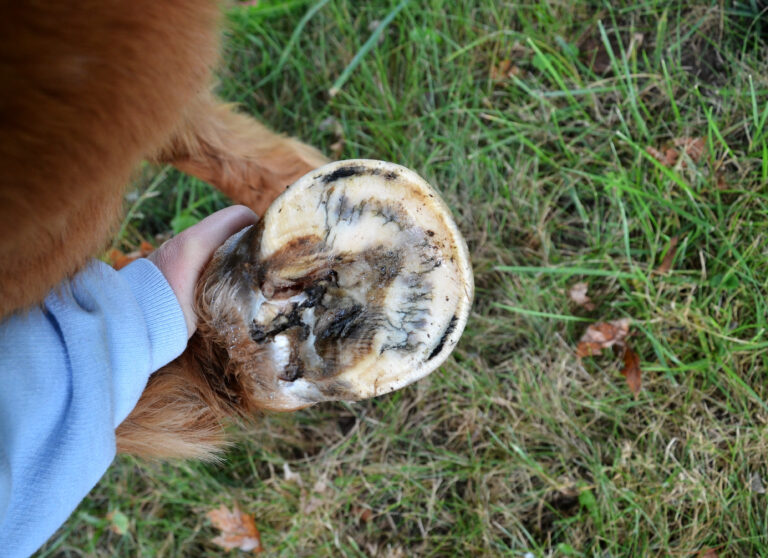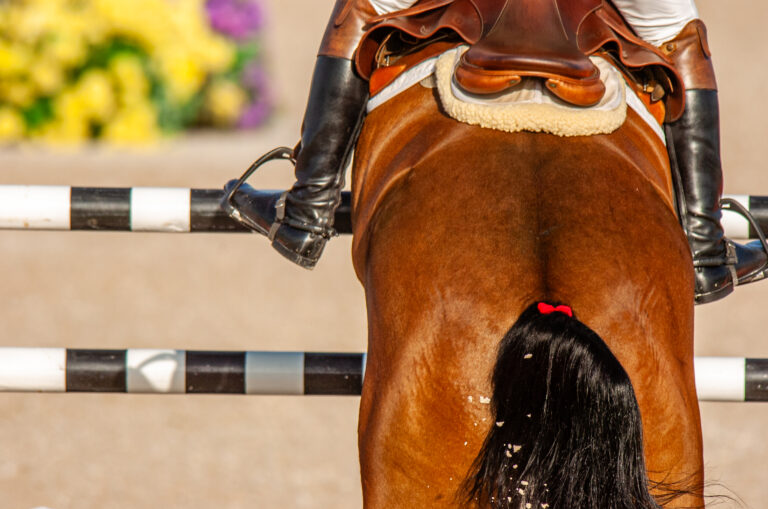Q: My horse gets rain rot. What exactly is it and how can I treat and prevent it?
SAMUEL D. HURCOMBE, BSc, BVMS, MS
A: Rain rot is a layman’s term for a common equine bacterial skin disease caused by Dermatophilus congolensis. It is characterized by the formation of crusty scabs, which peel off along with clumps of hair, leaving bare spots on the skin. As its name implies, rain rot appears on the parts of the body exposed to rain: the top of the head, neck and back. It rarely occurs on the legs or belly. We see it most frequently in regions where warm temperatures, high humidity, heavy rainfall and insects create ideal growing conditions for the bacteria—for example, the southern United States in the wintertime.

The bacterial spores that produce this disease cannot penetrate a healthy horse’s natural skin barrier unless the skin experiences trauma (such as a wound, scrape or abrasion), an insect bites the horse or excess moisture on the skin strips away its normal layer of protective oils. Any of these events can allow the spores to invade the outer skin layers, where they then spread. In response to this invasion, the horse’s immune system produces extra white blood cells and proteins, which accumulate in small, pus-filled bumps on the skin, called pustules. If you run your hand along your horse’s coat, you will feel these lumps.
As each pustule matures, the skin layer beneath it dies off. The resulting dead skin cells clump together with surrounding hairs, forming scabby tufts (sometimes called “paintbrush lesions” because they resemble tiny paintbrushes), that can be easily pulled off. During this period, your horse’s skin may be sensitive and/or itchy. If he scratches the area, he may traumatize the skin even further, thus spreading the bacteria.
Individual lesions may appear in a spotty pattern across your horse’s body or they may coalesce into more expansive areas, leaving broad patches of bare skin. After the scabs and hair fall off, the skin underneath will appear red and raw. If the predisposing environmental factors are removed, the skin quickly re-epithelializes (heals)—usually within seven to 10 days—and new hair begins to grow in.
On the other hand, if you do not address the environmental factors—for example, your horse continues to stand outside in the rain without protection—rain rot can recur all winter long. Left untreated, it may lead to secondary infections, such as Staphylococcal folliculitis. In very rare situations, it can progress to a point at which the bacterial population overwhelms the horse’s immune system. These extreme cases may exhibit fever, pain, loss of appetite and other signs of discomfort in addition to large areas of hair loss.
Rain rot is often mistaken for fungal diseases, such as ringworm, which are far less common. Antifungal medications have no effect on the bacteria, so it is very important to diagnosis the condition correctly. Your veterinarian can perform a definitive diagnosis by culturing a lesion, although most simply identify the disease clinically.
The vast majority of healthy horses heal spontaneously from rain rot without any treatment necessary, so long as the environmental factors are removed. If your horse is turned out frequently in rainy conditions, be sure he has access to shelter—a shed or lean-to. A light, breathable sheet may help to protect him from rain, but avoid heavier blankets that trap moisture against his skin. Clean and wash all of his tack and equipment thoroughly and take a break from riding if he develops lesions in the saddle area (the saddle will trap sweat against his skin and may cause discomfort while the lesions are active). When you bathe him, scrape excess water off his body and keep him inside until his coat dries thoroughly. During the buggy season, apply insect repellent regularly.
These measures will solve the vast majority of rain-rot cases. If your horse’s symptoms persist, ask your veterinarian to recommend a shampoo containing a keratolytic agent, such as benzoyl peroxide. Such products strip away dead layers of skin, along with crusty scabs and bacteria, and help to treat secondary conditions. I would not recommend treating a topical disease like rain rot with systemic antibiotics. This would not only disrupt the natural micro-ecology of your horse’s gastrointestinal tract unnecessarily but also contribute to the broader problem of antibacterial resistance created by the overuse of antibiotics.
With a few simple, preventive measures and extra diligence during the rainiest times of the year, you should be able to cure your horse’s rain rot for good.
A native of Australia, Samuel Hurcombe, BSc, BVMS, MS, studied veterinary medicine at Murdoch University in Perth before completing his internship in Sydney. He moved to the U.S. in 2005 and did a three-year internal-medicine residency followed by a two-year critical-care fellowship at The Ohio State University. He served as an assistant professor of equine emergency and critical care at Ohio State from 2010 to 2014. Last July, he joined the faculty at Cornell University, where he focuses his research and clinical work on gastrointestinal disease, specifically medical and surgical colic treatment. Dr. Hurcombe is a diplomate of the American College of Veterinary Internal Medicine and the American College of Veterinary Emergency and Critical Care.
This article originally appeared in the March 2015 issue of Practical Horseman.











